Call: (626) 793-6930
General Dentistry
Dental Exam
The purpose of a Professional Dental Exam is to detect Oral Disease. For most patients that includes looking for Tooth Decay, Periodontal (Gum) Disease, and Oral Cancer.
We visually look at the condition of your teeth and gums: noting any restorations and their condition (clinically sound vs need for replacement), look for visual signs of decay, assess the condition of the Periodontal Tissue ( bone loss, recession, color, puffiness.) We also visually look for signs of Oral Cancer and offer a secondary screening which will be described later.
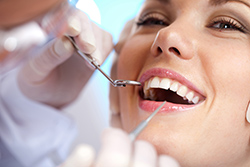
Digital Dental Radiograph
One of the greatest innovations of modern dentistry has been Digital Radiographs. They provide high quality image for instant viewing on a monitor with minimal exposure to radiation. Digital radiographs of any kind reduce exposure by 90% over traditional film radiographs.
You should expect to have a complete set of Radiographs taken at your initial examination unless you have current sets available for the visit. We will further explain this pre-requisite when you call.
Oral Cancer Screening
Oral cancer is diagnosed on 35,000 Americans yearly. The key to survival is early detection and treatment. 25% of people diagnosed are in the “low Risk” demographic.
We perform a visual exam early, looking for lumps, bumps, sores that are present longer than 2 weeks.
We offer a secondary exam known as “Vizilite”. It entails swishing for 1 minute with a liquid that tastes like vinegar with a hint of raspberry, then expectorated, and a light is used to look around. This exam is voluntary and has an additional charge that most insurance plans do not cover.
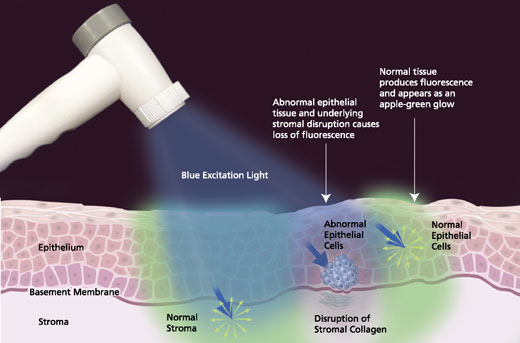
Treating Gingivitis and Periodontal Disease
No matter how often you brush, and floss, plaque and tarter deposits still build up on your teeth. A professional teeth cleaning is the most effective way to remove these deposits and prevent them from causing more serious problems. Plaque and Tarter harbor the bacteria known to cause Tooth Decay and Periodontal Disease.
In our office we provide 2 types of treatment for conditions of the gums:
- Prophylaxis: preventive treatment to minimize future periodontal disease. This is the type of routine treatment most patients will experience. This is conservative treatment for Gingivitis patients. After the examination, if there is no bone loss, minimal tarter deposits, or other signs of Gum disease; a Prophylaxis is provided. This includes removing Plaque and Tarter using hand instruments and/or ultrasonic cleaner, followed by polishing with a flavored pumice like prophy paste to remove stain. These patients are placed on a 6 month recall program.
- Quadrant Scaling and Root Planing: Conservative stage 1 treatment for patients with Periodontal Disease. The presence of Bone Loss is the most decided factor for treating patients with this treatment. Red, Swollen Gums, Loose Teeth are additional signs we look for.
This treatment while similar in process to the Prophylaxis; it is performed in a series of 4 appointments (4 quadrants are treated). Some type of Local Anesthetic will be used to minimize discomfort. Scaling with a combo use of ultrasonic/hand instruments followed by polishing.
Periodontal Scaling patients are placed on a 3-4 month recall program to control the disease.
We cannot cure Periodontal Disease; we can only keep it at bay with treatment and Periodontal Maintenance.
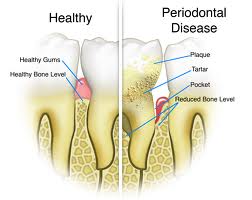
A few words about the Deep Cleaning
A few words about the "Deep Cleaning": many offices try to tell patients they need a deep cleaning treatment. This is not a recognized procedure by the American Dental Association, it cannot be submitted to insurance, and the quoted fee is often times higher than a regular Prophylaxis. There are only two recognized codes for Periodontal Care as recommended in our office. These were explained in the previous section.
A 3rd code loosely described as "debridement/removal of tarter" is used when a proper exam cannot be performed because of the amount of plaque and tarter hinder this. The tarter removal is performed, the patient is rescheduled for thorough exam, and eventually scheduled for appropriate periodontal care.
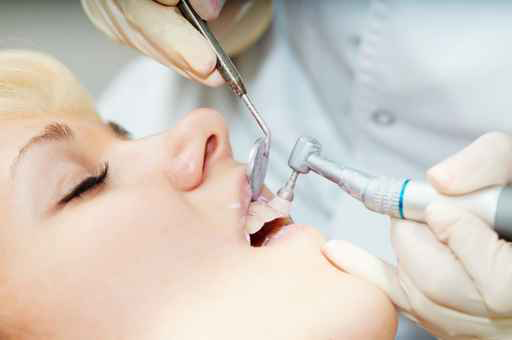
Composite Fillings
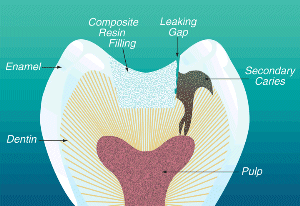
Cosmetic Dental Bonding
Dental bonding is basically a filling to repair smaller chips with little to no drilling. This preserves the tooth yet protects the area that is damaged.
Dental Crowns
For teeth that need to be repaired with over 50% tooth needs to be replaced, a dental crown will be recommended. The crown covers the whole tooth and reinforces the tooth structure for strength and durability. We use a combination of Gold, Porcelain Fused to Metal, Ceramic/Zirconia.
The procedure is a 2 stepped process: Preparation of tooth, Impression, Make a Temporary Crown. Two weeks later Cementation of Final crown
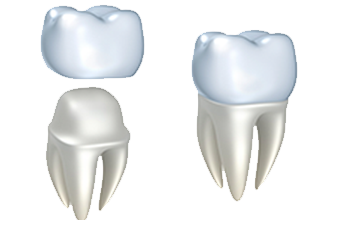
Replacement of Missing Teeth
When teeth are missing there are 2 “Permanent” treatments available:
Implant: Oral Surgeon places the implant (think Titanium Root), after healing, I restore the implant.
Dental Bridge: Teeth on both sides of space prepared for crowns “abutments” and then the replacement tooth/teeth(pontic).
I have a thorough visual/verbal discussion I give to patients who need tooth replacement. A Non-Permanent treatment for replacing teeth may include a Removable Partial denture. All options are discussed with patients.
For services I do not provide such as Root Canals, Extractions, and Periodontal Surgery I have a remarkable network of Specialists that I refer our patients to.which is held in place by a post-like structure called a dental abutment. Cantilever dental bridges are used in cases where there are surrounding teeth only on one side of the missing tooth. Maryland bridges are made of a specialized resin that is cemented to a metal framework and cemented to the enamel of surrounding teeth.
Dental bridges typically take 2-3 weeks to complete and are less invasive than other options, such as dental implants. With good oral hygiene and regular dental visits, dental bridges can last up to 30 years.
Pediatric Dentistry
Our office strives to serve the whole family. Many children do great in the general office setting. We recommend children have their first exam around the age 2 ½. The first visit is just a visual look and counting of teeth to allow the child to get used to seeing a dental professional.
For children with extensive dental issues, I have several Pediatric Dentists that I refer to.

